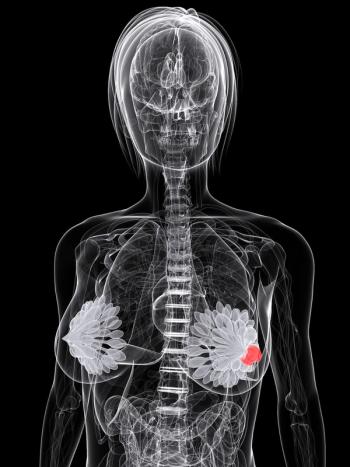
Using Cannabis as a Palliative Treatment in Patients With Cancer
Ahead of the ASCO Annual Meeting, we discuss the use of cannabis as a palliative treatment in patients with cancer with Claude Cyr, MD.
Ahead of the 2019 American Society of Clinical Oncology (ASCO)
-Interviewed by Bryant Furlow
Cancer Network:How is the need for palliative treatment options for patients with cancer changing, and what potential roles do you see for cannabis in this setting?
Dr. Cyr: Palliative patients often have multiple symptoms, ranging from physical, like pain and nausea, to psychological, like anxiety and depression, and even existential or spiritual. While we’re always looking for new ways to better manage these symptoms, cannabis is one of those few compounds that addresses many of the most distressing symptoms encountered in palliative care, like pain, nausea control, insomnia, anxiety, depression, and even fatigue. It also has an enviable safety profile.
Cancer Network:When is it appropriate to consider cannabis for a patient who needs cancer palliation? For which symptoms is cannabis most often used?
Dr. Cyr: Palliative patients must ultimately decide if, and when, they wish to try cannabis, but physicians should be knowledgeable of all the effects of cannabis and not just those related to pain control or nausea, which was the focus of many of the earlier studies. Physicians must be willing to offer this treatment option on an as-needed basis. I believe cannabis should be considered at any point for patients with a terminal illness.
Cancer Network: Are there any patients for whom cannabis should not be considered?
Dr. Cyr: Cannabis has a relatively good safety profile as long as the dosage issues are taken into consideration. Unfortunately, THC can be a little tricky in some individuals at small doses. It is generally safe, but patients with a history of psychosis, for example, can be at risk of aggravating their conditions. Also, high initial doses of THC can induce temporary psychotic symptoms in many individuals who don’t have this predisposition. It can also cause hypertension and syncope, but this can almost always be avoided with a careful titration. CBD, on the other hand, which is also one of the main cannabinoids in cannabis, is usually well tolerated at even high doses in all types of individuals. There is another group in whom it must be avoided. Patients who use immunotherapy like PD-1 and PD-L1 inhibitors should avoid using cannabis until further notice, since a study last year demonstrated that cannabis can reduce the efficacy of these types of treatments.
Cancer Network: How strong is the evidence base for cannabis’s efficacy for treating cancer symptoms and treatment symptoms?
Dr. Cyr: Unfortunately not that good at the moment. There are only a few randomized studies that have been done for pain and appetite, and certainly not enough to meet the requirements of present-day evidence-based standards.
Cancer Network:Let me follow up on that point. What are the implications there for how clinicians should address this issue then? Should physicians wait for a patient to raise the issue of using cannabis for palliation, or is it okay for clinicians to raise the issue, given that it’s not yet been approved by regulatory bodies?
Dr. Cyr: Considering the fact that cannabis can address so many different symptoms related to palliative care, I think patients who present certain symptoms that are not controlled by traditional therapy should be offered cannabis at any point to see whether, first, the cannabis is well tolerated, and second, if it does treat the condition at hand.
Cancer Network:Should cannabis be prescribed only as an adjuvant to other supportive therapies?
Dr. Cyr: When it comes to palliative care, I think suffering must be addressed with every tool we have at our disposition. Also, patient preference must also be taken into consideration.
Cancer Network: What else would you like to tell our readers about cannabis and cancer symptoms?
Dr. Cyr: My main focus would be not to forget that cannabis is a multifaceted tool. It needs to be regarded not only as an adjunct or an alternative to a specific symptom control, but in a general approach to quality of life.
Cancer Network: Thank you very much. We appreciate your time.
Dr. Cyr: Thank you so much!
Newsletter
Stay up to date on recent advances in the multidisciplinary approach to cancer.

















































































